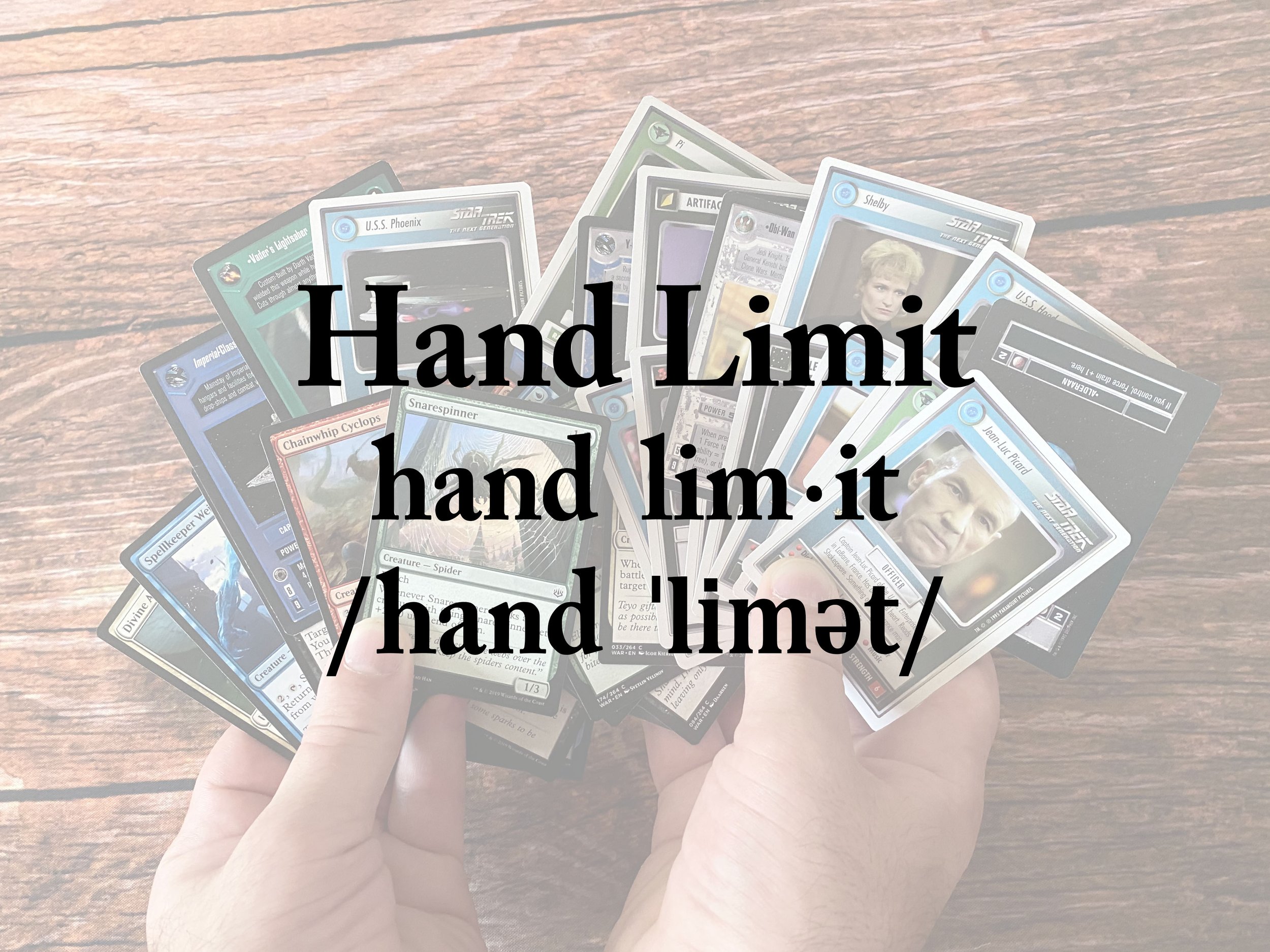Game Jargon Definition: “Hand Limit”
Hand Limit (noun) - hand lim · it /hand ˈlimət/
A term most applicable to card-driven games, a hand limit refers to the maximum number of cards that a player may hold in their “hand” (typically meaning cards that they hold in their physical hands and/or have immediate access to) at any given time.
A typical hand limit is five or seven, but there are plenty of games which have different hand limits. And while not all games that utilize cards have a hand limit, the majority of games that use decks of cards will have a hand limit of one type or another. The point at which a hand limit is enforced depends entirely on the game. Sometimes a particular round, phase, or other trigger initiates the enforcement of a hand limit (e.g., the end of a player’s turn). Whereas in other games, the hand limit is in effect at all times regardless of the game state.
Typically, hand limits are incorporated into rules in order to limit options—to force players to make difficult decisions between resources they may want now and resources that they may need later but can’t use now. This also prevents players from holding resources early in the game, biding their time, and then having an overwhelming advantage of card-based resources later in the game.
Some examples of games that enforce hand limits include various forms of Poker (1810), Risk (1959), Magic the Gathering (1993–present), The Settlers of Catan (1995), Dominion (2008), Defenders of the Realm (2010), and Moonrakers (2020).

